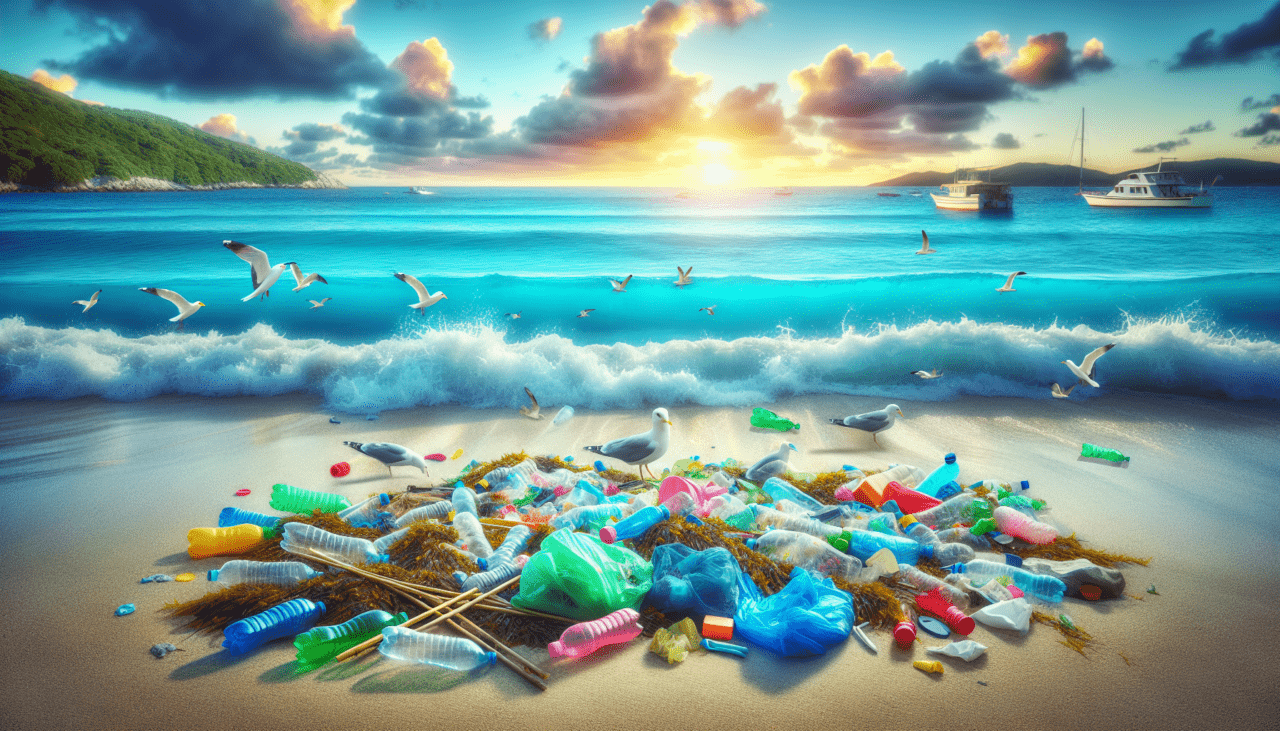Your beach exploration after storms often reveals new discoveries. Frustrating plastic waste stretches endlessly across the landscape, consisting of bottles, caps, discarded fishing equipment, and numerous tiny colorful fragments. Your attention might be drawn to plastic bags hanging from trees or videos showing wildlife trapped in discarded waste. This powerful visual evidence demonstrates how plastic pollution has escalated into a worldwide crisis. The situation is akin to trying to empty an ocean with a drinking glass. We must acknowledge the vast scale of the problem, because complaints alone will not solve it—we need to explore current solutions and recognize our individual responsibility for change. Fortunately, the negative news is balanced by dedicated innovation that is driving progress toward preventing pollution and advancing cleanup efforts.
Understanding the Challenge: The Vastness of Plastic Waste
The massive amount of plastic waste demands serious attention, as its sheer quantity exceeds all expectations. Since mass production began in the mid-20th century, plastic has accumulated into billions of tons across the world. Plastic bottles can take hundreds, even up to a thousand years to decompose, and as they break down, they fragment into microplastics. This persistent waste continually breaks into smaller pieces, causing long-term environmental issues.
Impacts on Our World
The problem extends far beyond the visual impact on beaches. Plastic pollution affects every ecosystem on the planet. Marine life such as whales, turtles, and seabirds are highly vulnerable, often mistaking plastic for food, which leads to starvation, internal injuries, or even death. Discarded fishing nets and plastic rings pose lethal dangers, while microplastics have been detected in Arctic ice, deep ocean trenches, atmospheric air, and even human food. Plastic’s presence is now virtually everywhere.
Tackling the Tide: Evolving Strategies for Cleanup
Traditional cleanup methods, such as beach cleanups and shoreline debris collection, have been in place for years. However, while community-driven efforts foster social connections, they do not fully address the large-scale problem driven by ocean currents.
Focusing on the Source and the Sink
Experts now endorse a dual approach to combat plastic pollution. The first part involves extracting physical plastic waste from oceans and rivers. The second focuses on improving waste management practices, reducing plastic production, and developing innovative solutions for recycling and reuse. Both aspects are essential to controlling and eventually reducing plastic pollution.
The Rise of Technology in Cleanup
Amid this daunting challenge, there is a glimmer of hope through technology. Traditional methods are receiving significant technological advancements. Modern extraction technology is now employed to retrieve large amounts of plastic waste from major ocean gyres and intercept river plastic pollution before it reaches the sea.
Cutting-Edge Cleanup: Machines, Missions, and More
One standout initiative is the Ocean Cleanup project, which has developed passive plastic collection systems that utilize ocean currents. Their U-shaped structures, equipped with screening systems, collect plastic waste; vessels then retrieve this waste during scheduled tours. By turning ocean currents into an ally, this technology addresses the plastic problem head-on.
Beyond the Ocean: Cleaning Rivers and Coasts
While cleaning ocean waters makes for striking visuals, true prevention starts at the source—rivers. Since most ocean plastic originates from land-based sources, tackling pollution in rivers is crucial. River cleanup initiatives use floating barriers, conveyor belt systems, and automated trash collection boats to intercept plastic waste before it reaches the ocean. These operations are often more contained and manageable than their ocean counterparts.
Stopping the Flow: Implementing Lasting Solutions
Expert consensus holds that the most effective solution to plastic pollution is to prevent its entry into the environment in the first place. However, cleanup efforts remain a vital part of the overall strategy. A complete solution to plastic pollution must address everything from production to disposal, ensuring a circular lifecycle for materials.
The Role of Plastic Recycling and the Circular Economy
Plastic recycling is frequently discussed, but the current global recycling system needs significant improvement. Many types of plastics are challenging to recycle, and in numerous places, proper collection systems are lacking. Moreover, recycled plastic often struggles to find a stable market demand. A true circular economy requires businesses to design products that are easy to recycle and to establish robust waste collection networks, creating demand for recycled materials.
Embracing Sustainable Plastic Waste Solutions
Innovation in material science is also key. Scientists are developing biodegradable plastics made from algae or plant starch that naturally decompose. Many businesses are rethinking their packaging designs, reducing plastic usage, and shifting toward paper, cardboard, or reusable containers. These sustainable plastic waste solutions are still in development, but they are essential for eliminating dangerous single-use plastics in the future.
Collective Action: From Policy to Personal Choice
Tackling plastic pollution requires collective action. Governments must implement robust policies, such as bans on single-use plastics, extended producer responsibility programs, and increased funding for waste management infrastructure—especially in developing countries. Businesses need to reformulate products, reduce packaging, and build effective recycling systems. Most importantly, individual choices have a direct impact. Here are some actions you can take:
- Use single-use plastics (bags, straws, bottles, coffee cups) only as necessary.
- Choose products with environmentally friendly packaging materials.
- Support organizations actively working to reduce plastic waste.
- Participate in neighborhood cleanup activities.
- Properly recycle accepted materials and advocate for systemic recycling improvements.
- Support policies aimed at reducing plastic pollution.
Moving Forward: Hope on the Horizon
Despite the overwhelming scale of plastic pollution, there is hope. Technological innovations in cleanup methods, alongside preventive measures, are steadily improving our ability to combat environmental plastic waste. Efforts range from massive ocean systems and small-scale river interceptors to global initiatives enhancing waste management and sustainable materials. This complex issue requires innovative solutions, financial backing, and significant behavior changes across all sectors of society. Daily efforts to solve the problem are growing stronger; through collective action and conscious choices, we can create a substantial impact to protect our planet for future generations.
